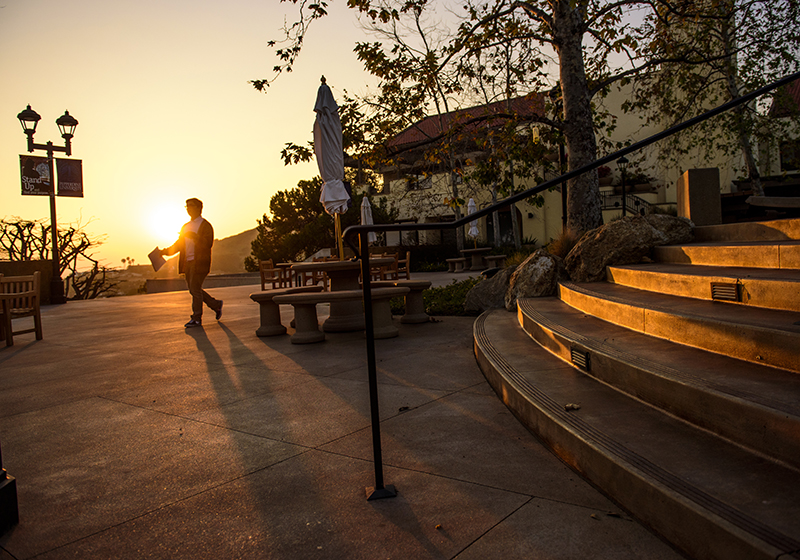
Tuition for Seaver College will increase 3.55 percent for the 2015-2016 year, from $23,220 to $24,045 per semester, Dean Michael Feltner announced in an email sent to the undergraduate student body in March.
This comes out to $48,090 in tuition for both fall and spring semesters. The total estimated cost of attendance, including room and board, will be $67,152, which is up from $64,482 from the 2014-2015 school year.
About 75 to 80 percent of students receive some type of financial assistance at Pepperdine.
“Even as expensive as it is, you’re not paying the full cost,” Chief Financial Officer Paul Lasiter said.
So where does all of student tuition go? All of the tuition money the university receives from all five schools is deposited into “one big bucket,” Lasiter said.
“It all gets commingled together,” he said.
Here’s how the university gets the money to distribute, via the 2013-2014 university audited financial statements (the report for the 2014-2015 academic year will be released in October):
According to the 2013-2014 financial statements, the university received $302 million in the 2013-2014 academic school year, which ended July 31, 2014.
The university received $298 million that year from student tuition and fees. Fees include labs or particular classes with specific costs associated with them. That $298 million turned into $201 million after $96 million were distributed to financial aid recipients. The remaining $201 million in revenue then rose to the final $302 million after the university received revenue from categories such as room and board and private gifts and grants.
And here’s how the university spent it:
Every tuition dollar that comes into Seaver College is spent in one of four ways: providing student financial aid, instruction and research costs, academic support, and student services, according to the college’s budget analyst, Nicole Marrs.
For the 2013-2014 academic year, with $302 million available, the university spent that money in eight main areas: instruction and research ($90.4 million), academic support ($49.65 million), student services ($49.1 million), public service ($14.2 million), auxiliary enterprises ($26.8 million), management and plant operations ($52.5 million), alumni relations and development ($2.3 million), and fundraising ($7.4 million).
This leaves total expenses at about $292 million, and the university with $9.5 million going into reserve. This is the equivalent of having $100 in your bank account and spending $90, with $10 leftover. The $10 would be the change in net assets before non-operating revenues and expenses.
Out of all the money that is received by the university as a whole, there is a certain part that can only be spent in certain ways. This includes money from gifts and donors, who can specify for what their money should be used. The rest, as Lasiter said, “is fungible.”
Lasiter said there are three main areas that affect students the most: instruction and research, academic support, and student services. These areas are broken down in the following way, via the Audit for Accounting Guide for Not-for-Profit Organizations that Pepperdine uses to describe said areas.
Instruction and research
Instruction and research includes any expenditures for all activities that are part of Pepperdine’s instruction program. This includes expenditures for departmental research and expenditures for department chairmen. Activities organized to produce research outcomes, whether individual and/or project research, are included in this category.
Academic support
Academic support includes retention, preservation and display of educational materials, such as libraries, museums and galleries. This category also includes audiovisual services and technology, academic administration, personnel development, and course and curriculum development.
Student services
Student services includes funds expended for the Office of Admission, the Student Registrar and activities whose primary purpose is to contribute to the students’ emotional and physical well-being. This includes student activities, cultural events, student newspapers, intramural athletics, student organizations, intercollegiate athletics, counseling and career guidance, student aid, and student health services.
Using simple division, what this translates to per student — taking into account the 6,048 full-time equivalent (FTE) students enrolled in the five schools — is as follows:
The full-time equivalent student number includes all of the full-time students and calculates how many full-time students the various part-time students equal.
According to Nicole Marrs, each full-time equivalent student pays $49,291 in tuition and fees.
One FTE pays $5,692 in room and board (a number less than the $13,390 described in the online cost of attendance calculator, since not all students in the five schools live on campus), and $13,430 that go to support for private gifts and grants and endowment support. The total comes out to a single FTE student paying $68,413 per year, without taking financial aid into account, which is approximately $15,973 per FTE student.
But in what areas is students’ money spent? Some of the categories include personnel ($28,000 per FTE student), professional services ($3,190 per FTE student), student meals ($1,329 per FTE student) and maintaining one of the university’s most alluring aspects: the view.
The seemingly evergreen landscape and Instagrammable features that make Pepperdine one of the nation’s most beautiful campuses aren’t free. Students pay approximately $8,000 a year for the maintenance of the university’s physical features.
Those who decide how to spend the money are the University Planning Committee, which is in charge of setting the budget for each year and considering tuition and housing rates, according to the university website. The UPC is composed of the president, vice presidents, the provost, the vice provost, deans of the five schools and three faculty representatives and executives who manage key areas, such as the dean of libraries.
“We start with what was budgeted the previous year and review the needs of the department to serve students. For example, this year we added another full-time counselor to the Counseling Center to keep up with the increasing usage by students,” Dean of Students Mark Davis said.
This means that in order to fix something major within the university, the Dean’s office is approached and “lobbied” for funding. For example, if students need air-conditioning in the dorms, then Davis would request funds from Feltner.
The fund allocation then needs to go through the University Planning Committee, which is in charge of setting the budget for each year and for considering tuition and housing rates, according to the university website.
Pepperdine’s tuition prices are on the rise, but not necessarily if you are on scholarship, Lasiter said in an article in the April 9 issue of the Graphic.
Ricardo Avila completed this story in Professor Elizabeth Smith’s Jour 561 spring 2015 class.



